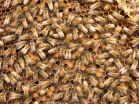Teenagers shape each other's views on how risky a situation is
Young adolescents' judgements on how risky a situation might be are most influenced by what other teenagers think, while most other age groups are more influenced by adults' views
2015-03-27
(Press-News.org) Young adolescents' judgements on how risky a situation might be are most influenced by what other teenagers think, while most other age groups are more influenced by adults' views, finds new UCL research.
For the study, published in Psychological Science, 563 visitors to the London Science Museum were asked to rate the riskiness of everyday situations such as crossing a road on a red light or taking a shortcut through a dark alley. Ratings were given on a continuous scale from low to high risk, and children (aged 8-11) generally rated situations as more risky than all other age groups.
Participants were then told how other people, either teenagers or adults, had rated the same situations, before being asked to rate each situation again. These risk levels from 'adults' or 'teenagers' were in fact randomly generated.
The results showed that all age groups were socially influenced and changed their risk ratings in the direction of other people's, but this social influence effect decreased with age. Most age groups adjusted their ratings more to conform to the ratings of adults than those of teenagers, except for young adolescents (aged 12-14).
"Young adolescents were more strongly influenced by other teenagers than by adults, suggesting that in early adolescence the opinions of other teenagers about risk matter more than the opinions of adults," explains lead author Dr Lisa Knoll (UCL Institute of Cognitive Neuroscience). "Our findings suggest that the target of public health interventions should be adolescent social norms, rather than simply focusing on the potential health risks associated with certain situations and choices."
Risk ratings were given on a continuous low-high scale without numbers, however they were converted onto a 0-10 scale for the analysis. On average, the first ratings given by each age group were as follows:
Ages 8-11: 6.2
Ages 12-14: 5.6
Ages 15-18: 5.2
Ages 19-25: 5.1
Ages 26-59: 5.5
After seeing a randomly-generated 'adult' or 'teenager' rating on screen, the average change in participants' risk ratings was dependent on their age group. Illustrative examples of the average changes in risk are given below:
Children aged 8-11: change 36% towards the adult rating, 31% towards the teenager rating.
Young adolescents aged 12-14: change 29% towards the teenager rating, 25% towards the adult rating.
Mid-adolescents aged 15-18: change 19% towards the adult rating, 17% towards the teenager rating.
Young adults aged 19-25: change 14% towards the adult rating, 11% towards the teenager rating.
Adults aged 26-59: change 8% towards the adult rating, 6% towards the teenager rating.
"As people get older, they become more confident in their own judgement of risk and less swayed by other people," says senior author Professor Sarah-Jayne Blakemore (UCL Institute of Cognitive Neuroscience). "We know that adolescents are more likely to take risks when with peers than alone. Our study showed that young adolescents do not perceive situations as less risky than older age groups, but do tend to change their risk perception in the direction of the opinions of similar aged peers. So other teenagers' opinions about risk seem to influence young adolescents into judging a situation as less risky than they originally thought it was."
INFORMATION:
ELSE PRESS RELEASES FROM THIS DATE:
2015-03-27
The official global target of a 2°C temperature rise is 'utterly inadequate' for protecting those at most risk from climate change, says a lead author on the Intergovernmental Panel on Climate Change (IPCC), writing a commentary in the open access journal Climate Change Responses.
The commentary presents a rare inside-view of a two-day discussion at the Lima Conference of the Parties (COP) on the likely consequences of accepting an average global warming target of 2°C versus 1.5°C (measured from pre-industrial times until 2100).
The discussions were part ...
2015-03-26
Highlights
For older patients in need of a kidney transplant, rapid transplantation from an older deceased donor is superior to delayed transplantation from a younger donor.
Kidneys from older donors do not have sufficient longevity to provide younger patients with a lifetime of kidney function, but they do have sufficient longevity to provide older patients who have a shorter life expectancy with a lifetime of kidney function.
More than 100,000 people in the United States are waiting for a kidney transplant.
Washington, DC (March 26, 2015) -- A new study highlights ...
2015-03-26
Honey bees use different sets of genes, regulated by two distinct mechanisms, to fight off viruses, bacteria and gut parasites, according to researchers at Penn State and the Georgia Institute of Technology. The findings may help scientists develop honey bee treatments that are tailored to specific types of infections.
"Our results indicate that different sets of genes are used in immune responses to viruses versus other pathogens, and these anti-viral genes are regulated by two very distinct processes -- expression and DNA methylation," said David Galbraith, graduate ...
2015-03-26
(Boston) - Genes appear to play a stronger role in longevity in people living to extreme older ages, according to a study of siblings led by Boston University and Boston Medical Center (BMC) researchers.
The study, published online in the Journal of Gerontology: Biological Sciences, found that for people who live to 90 years old, the chance of their siblings also reaching age 90 is relatively small - about 1.7 times greater than for the average person born around the same time. But for people who survive to age 95, the chance of a sibling living to the same age is 3.5 ...
2015-03-26
Why does it seem as if a dark band ripples through a flock of European starlings that are steering clear of a falcon or a hawk? It all lies in the birds' ability to quickly and repeatedly dip to one side to avoid being attacked. For a split second, these zigs change the view that observers on the ground have of the birds' wings to cause a so-called agitation wave. This evasive strategy is copied as quick as a flash from one neighboring bird to the next. The escape behavior underlying this was discovered in a study led by Charlotte Hemelrijk of the Centre for Ecology and ...
2015-03-26
Rockville, Md. (March 26, 2015) -- The motion of coins in a "Penny Pusher" carnival game is similar to the movement of cells in the eye's lens, as described in a new study published in Investigative Ophthalmology & Visual Science (IOVS). This new insight may help scientists understand how the eye maintains its precise shape -- critical for clear vision -- and how cataracts develop.
"If the size, shape or position of the eye is not carefully regulated, we simply will not see clearly," said author Steven Bassnett, PhD, of Washington University School of Medicine, Department ...
2015-03-26
Life expectancy for Hispanics in the U.S. currently outpaces other ethnic groups, yet a new study finds that Mexican Americans -- especially women who were born in Mexico -- are spending a high proportion of their later years with some form of disability, a fact that suggests a growing need for community assistance and long-term care in the future.
These findings are reported in a new article published online in The Journals of Gerontology, Series B: Psychological and Social Sciences titled "Longer Lives, Sicker Lives? Increased Longevity and Extended Disability Among ...
2015-03-26
Nobody likes getting the flu, but for some people, fluids and rest aren't enough. A small number of children who catch the influenza virus fall so ill they end up in the hospital -- perhaps needing ventilators to breathe -- even while their family and friends recover easily. New research by Rockefeller University scientists, published March 26 in Science, helps explain why: a rare genetic mutation.
The researchers scrutinized blood and tissue samples from a young girl who, at the age of two-and-a-half, developed acute respiratory distress syndrome after catching the flu, ...
2015-03-26
CAMBRIDGE, Mass., March 26, 2015 - Newly published research from the Forsyth Institute details a discovery explaining why the 100 million Americans estimated to be taking prescription and over-the-counter antacid and heartburn medications may be at an increased risk of bone fractures.
The new report from Forsyth, published in the March issue of the prestigious medical research journal PLOS Genetics, explains that stomach acid in the gastrointestinal tract plays an important role in helping the intestines absorb and transfer calcium to the skeletal system. While the ...
2015-03-26
Genetic defects affecting tiny channels in human nerve cells lead to several neurological diseases that result from aberrant nerve transmission, such as episodic ataxia, absence epilepsy, and migraines. These disorders have also been associated with neurodegeneration, but it has been less clear why this should be.
The transmission of nerve impulses requires the perfect orchestration of a series of complex cellular events in a matter of fractions of a second. The membrane that surrounds a nerve cell is normally electrically polarized, but a nerve impulse triggers a Mexican ...
LAST 30 PRESS RELEASES:
[Press-News.org] Teenagers shape each other's views on how risky a situation is
Young adolescents' judgements on how risky a situation might be are most influenced by what other teenagers think, while most other age groups are more influenced by adults' views

